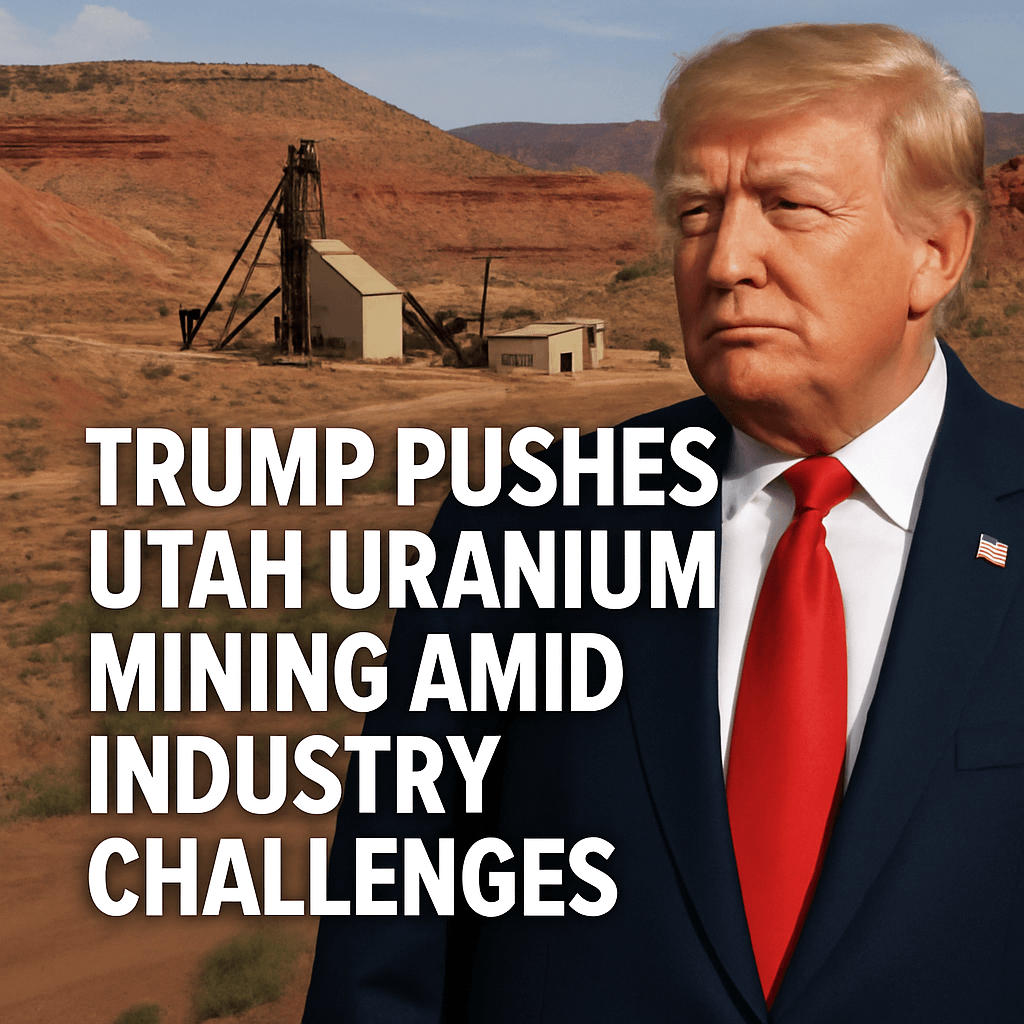Trump Pushes Utah Uranium Mining Amid Industry Challenges

In the arid terrain of southeastern Utah, an area renowned for its stunning red rock formations, the dormant uranium mining industry is inching towards revival under the aegis of the Trump administration. This shift reflects a broader strategy to bolster domestic energy production amidst rising global tensions and shifting energy policies.
Regulatory Quickening: The Velvet-Wood Mine
One significant focal point is Anfield Energy’s Velvet-Wood mine, located approximately 35 miles (56 kilometers) south of Moab. Under normal circumstances, projects like this would undergo lengthy reviews by the U.S. Bureau of Land Management (BLM). However, in a remarkable acceleration, the bureau approved the reopening plans in just 11 days, capitalizing on President Trump’s declaration of a “national energy emergency.” This designation allows for expedited regulatory reviews for energy projects, emphasizing the administration’s commitment to enhancing energy independence.
Further Approvals and Economic Viability
Despite this swift approval, multiple additional permits and extensive site preparation must occur before the Velvet-Wood mine can resume operations. Moreover, the prevailing price of uranium is a critical factor; it must increase significantly to ensure the economic viability of domestic production. Currently, uranium prices have seen an uptick but remain approximately one-third lower than their peak earlier in 2024.
As noted by John Uhrie, a former uranium executive now engaged in the cement industry, “Until the price goes up dramatically, you’re not going to be able to actually put these places into operation. You need significant capital on the ground to initiate mining operations effectively.” This highlights a pivotal issue—the interaction between regulatory conditions and market dynamics.
Shifting Market Dynamics Amid Geopolitical Tensions
The landscape of uranium mining is influenced heavily by global market dynamics. As of late 2023, uranium prices have experienced a notable rebound compared to historic lows experienced several years prior. The U.S. has effectively banned imports of uranium from Russia, a response to geopolitical tensions stemming from the 2022 invasion of Ukraine. This policy protects both national energy security and supports the revival of domestic uranium mining, which currently accounts for a mere 2% of U.S. uranium consumption.
- Approximately 98% of the uranium used in the U.S. is imported.
- More than two-thirds of these imports come from Canada, Australia, and Kazakhstan.
This reliance places the U.S. in a precarious position, especially when considering its role as a key player in the global nuclear energy sector.
Local Industry Developments and Historical Context
In addition to the Velvet-Wood mine, Anfield Energy is also pursuing the reopening of the Shootaring Canyon uranium mill in southern Utah, which has also been dormant since the early 1980s. Uranium mills are crucial as they process raw ore into yellowcake, a concentrated form of uranium used in fuel production.
Energy Fuels, currently the leading uranium producer in the U.S., recently inaugurated the Pinyon Plain mine near the Grand Canyon, marking a significant development in the domestic mining sector. Additionally, Energy Fuels operates the White Mesa mill, which remains the country’s only functioning uranium mill.
Environmental Concerns and Local Sentiments
Despite these positive developments, local sentiment in Moab regarding the uranium industry is complicated by its historical context. Once a bustling hub during the post-World War II mining boom, Moab now grapples with the long-term environmental legacy of uranium mining, evidenced by the Moab Uranium Mill Tailings Remedial Action project, which aims to remediate over 480 acres of contaminated land adjacent to the Colorado River. This $1 billion U.S. Department of Energy initiative is expected to conclude within the next five years, addressing decades of environmental degradation.
“They provided no opportunity for the public to say, ‘You need to look at this, you need to look at that,’” said Sarah Fields, director of Uranium Watch.
Nuclear Power’s Role in Future Energy Needs
Looking ahead, the need for carbon-neutral energy sources makes nuclear power an attractive option. It can deliver continuous energy to meet the demand of an increasingly electrified society driven by the proliferation of electric vehicles and advanced technologies. While the U.S. nuclear industry is not at immediate risk of uranium shortage, sourcing domestic materials is vital for insulation against external market volatility.
As of 2024, domestic uranium output has increased significantly, producing almost 700,000 pounds of yellowcake—an increase of over twelve times the previous year’s output. However, this amount still falls short of the 32 million pounds imported, highlighting ongoing challenges in achieving self-sufficiency in nuclear fuel production.
Conclusion: The Path Forward for U.S. Uranium Mining
While recent initiatives represent a significant step towards revitalizing uranium mining in the U.S., the future of the industry hinges on multiple factors, including market prices, regulatory conditions, and community acceptance. As emphasized by Uhrie, creating a fully integrated domestic uranium sector remains a complex challenge, involving not only extraction but also processing, conversion, and enrichment—all essential to transforming mined uranium into usable nuclear fuel.
In summary, while the U.S. government’s current approach may open avenues for renewed production, true resilience in the uranium market depends on a convergence of favorable economic conditions and environmental considerations.
Source: fortune